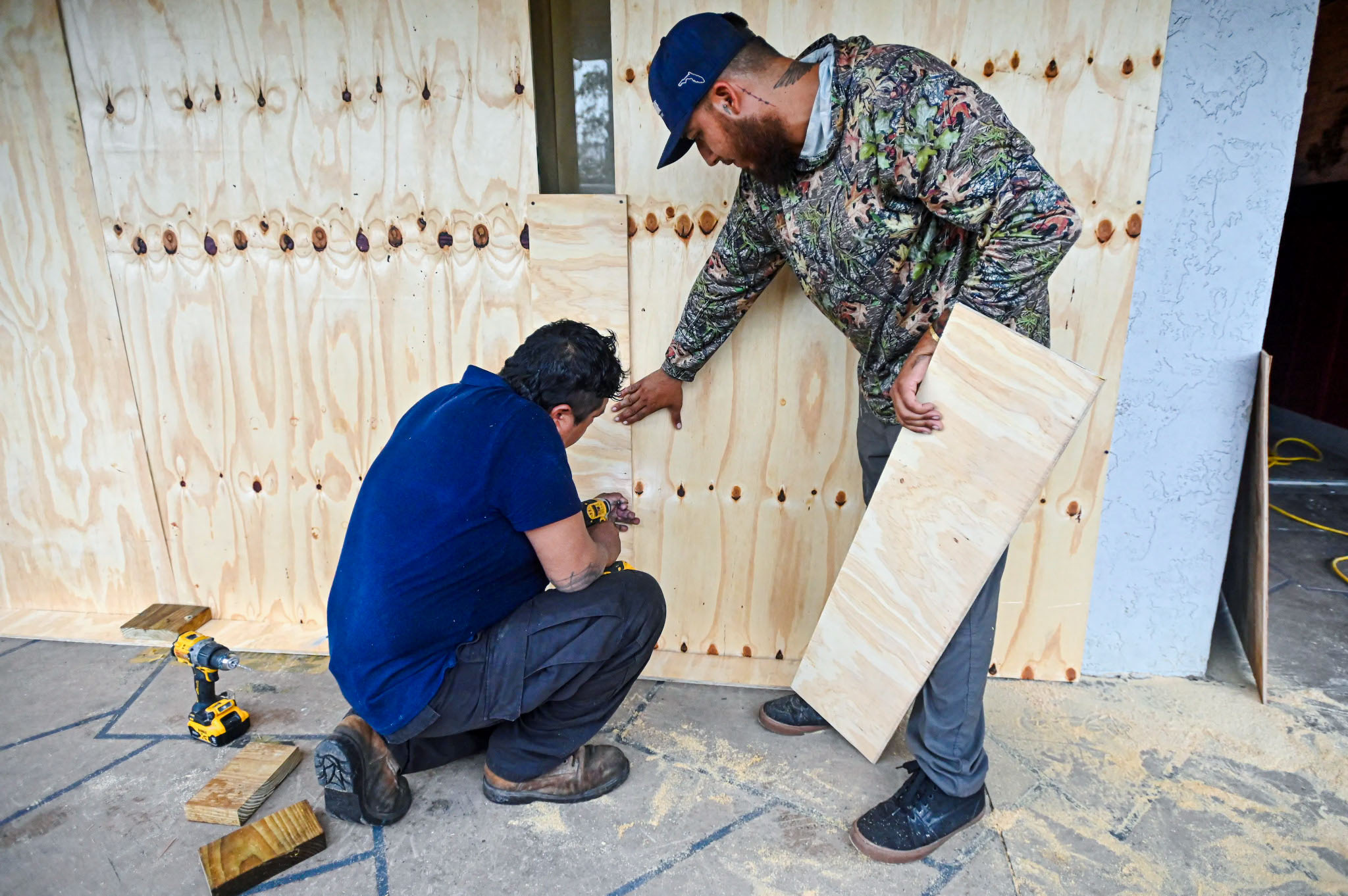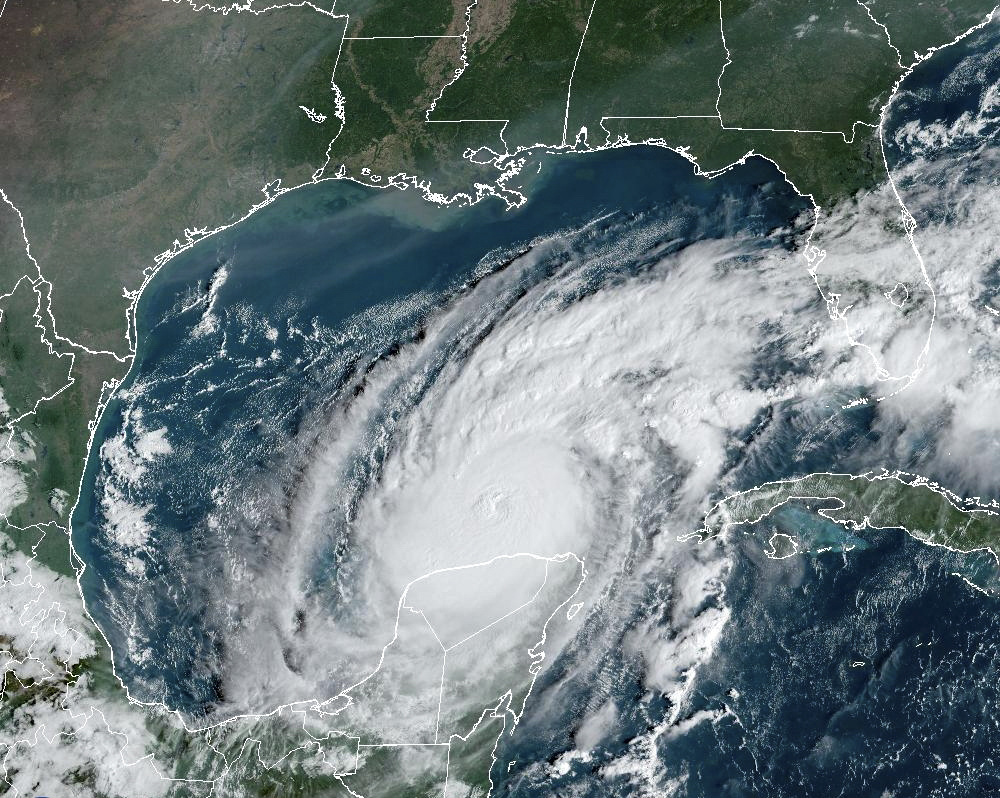


Workers board a window in Tampa, Fla., on Oct. 8, 2024, ahead of Hurricane Milton's expected landfall. Miguel J. Rodriguez Carrillo/AFP via Getty Images
Floridians were scurrying on Oct. 8 to prepare for a second devastating hit in as many weeks. But this time they expected a storm unlike any the hurricane-hardened residents in the central swath of the state have seen in 20 years.
With Hurricane Milton barreling toward a projected Tampa Bay-area landfall—the first in a century—residents in coastal evacuation zones still inundated by Hurricane Helene’s sideswipe were being urged to flee.
But the main escape routes, Interstate 75–running from the bottom of the state to the top and beyond–and Interstate 4, which stretches across the state, intermittently left drivers at a standstill for miles.

